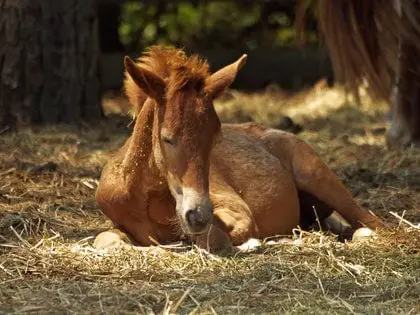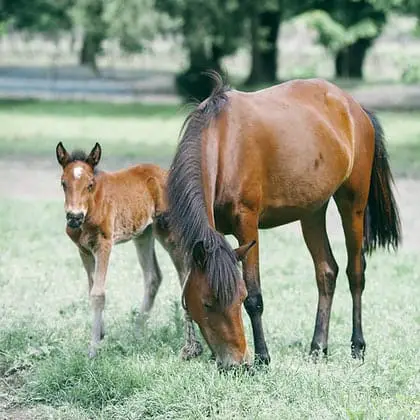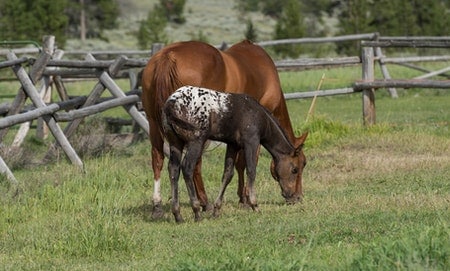In recent years, there has been a lot of debate in the horse industry about whether or not horses can have autism.
Many experts argue that horses can have autism because they see many similarities between autistic children and their own horses. For example, both show repetitive behaviors like rocking back and forth, spinning around in circles or chasing tail hairs. Horses also seem to be drawn to certain textures such as plastic bags or blinking lights which are known triggers for some people with autism.
But what is really happening when a horse behaves this way? Is it just an odd quirk, or could it be something more serious?
Some experts say yes – that these behaviors are signs of sensory processing disorder (SPD). SPD means that the animal has an unusual condition where it experiences sensitive reactions while others do not show any such signs at all!
A Sensory Processing Disorder manifests itself when the horse can’t receive and respond appropriately to incoming stimuli-especially from their five primary senses of sight, sound, touch, taste and smell.
It used to be called Sensory Integration Dysfunction until recent years when experts began using its current name.
Autism in Newborn Horses
Newborn horses with autism-like symptoms display some of the same behavior patterns as children, including detachment and a lack of interest in nursing. Researchers believe abnormal levels of naturally occurring neurosteroids may be responsible for these puzzling behaviors – which are strikingly similar to those exhibited by autistic children.

John Madigan, a veterinary professor at the University of California (1) says “The behavioral abnormalities these foals seem to resemble some of the symptoms in children with autism.”
From the moment they’re born, horses are up on their feet. They wobble for a while like an amateur tent-pole before settling in and nursing from momma horse’s teet.
It can be difficult for foals to adjust from a life in the womb. Some are born with what is called maladjusted foal syndrome (MFS). For these poor creatures, that transition is a bit more difficult. Disoriented and detached, they don’t seem to recognize their mothers or make normal sounds; some have been seen trying unsuccessfully to climb into feeder bins.
Horse breeders call them “dummy foals” because of how detached from reality they appear as if no matter where you put food down it won’t eat anything at all.
Equine expert John Madigan linked the key to MFS – as being the the same key that might also be responsible for one of the many factors behind children with an autism disorder.
A foal with maladjusted foal syndrome has been long thought to be the result of oxygen deprivation either in the womb or during birth, but Madigan thought differently.
Madigan researched the chemicals that keep foals at peace. He discovered three hormones, two neurosteroids and one pituitary hormone, which act as a sedative in womb after birth these chemical slows down reactions to stimuli by acting on same receptor synthetic drugs use. These natural calming agents cease production once baby horse is born but for some unexplained reason are not shut off in some. Leading to them having high levels of the hormone and subsequently produce symptoms associated with MFS.
Young Children & Foals – What they Have in Common
Isaac Pessah, a professor of molecular biosciences at the UC Davis School of Veterinary Medicine and a faculty member of the UC Davis MIND Institute stated that, “There are thousands of potential causes for autism, but the one thing that all autistic children have in common is that they are detached”.

Newborn foals suffer from a condition known as neonatal maladjustment syndrome, or dummy foal syndrome. Only 3 to 5 percent of live births fall victim to this terrible ailment that has up to 80% chance for recovery if treated with round the clock bottle feeding and intensive care in a veterinary clinic until fully recovered. This often is after 10 days on average.
Madigan and veterinarian neurologist Monica Aleman continued researching for other potential causes of foal maladjustment syndrome, noting that hypoxia usually results in serious permanent damage.
Their research showed a link between the number of hours spent by pregnant mares on their feet during gestation and birthing process with some cases exhibiting signs more closely associated to lack-of oxygen. It is important to note that most foals survive these problems but it can be an indicator as they go through life if this genetic predisposition exists among them without any outward sign or symptoms at birth time.
Dr. Madigan also pointed to the fact that foals with MFS often have rushed births or are born through C-section because they miss the key birth signal, which acts as an “on switch” signaling them to stop producing these neurosteroids and wake up.
Connection to Autism
A study of horse foals (2) has led to groundbreaking insights into the effects autism, a complex brain development disorder. This research could lead not only to treatments for autistic humans but also ways that we can care and understand our loved ones suffering from this condition better than ever before.

A Polish study published in 2013 that found children with autism had statistically higher levels of neurosteroids than those without the disorder. Researchers suggest these steroids contribute to some symptoms, such as anxiety and sensory deficits, making them promising biomarkers for measuring progress during therapy.
From Dr. Pessah’s perspective, the foal’s detachment from its mother was reminiscent of the aloofness and lack of eye contact typically seen in children with autism. It is however important to be cautious when comparing behaviors across species because it can difficult to understand if those similarities are just coincidence or not.
The similarity between the two made him hopeful for future research into this connection that could help families struggling with autistic spectrum disorder (ASD).
The researchers are working on conducting a study to see if there is any correlation between neurosteroids and bipolar disorder. They have not come up with anything concrete yet, but they plan on doing more research.

